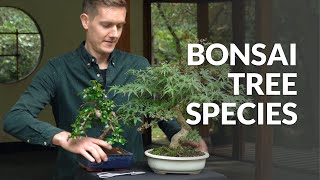Wrightia religiosa Bonsai Care guidelines
The water jasmine loves heat and likes to be placed in full sun. Temperatures should be above 65° F. If it gets colder, the tree can be semi-deciduous during winter. In autumn, when temperatures drop, the tree must be taken into the house and should be placed at a window where it gets as much light as possible. Grow lights can be necessary.
The water jasmine likes a lot of water and must be watered thoroughly as soon as the soil surface starts to get dry. The soil must never dry out completely, but also take care not to overwater the tree. Continue reading about watering Bonsai trees.
Watering
Free lecture from the Beginners CourseThe Wrightia bonsai needs a lot of nutrients and likes a high nitrogen fertilizer. Apply a good amount of solid organic fertilizer every four weeks or use a liquid fertilizer every week during the growing season. In winter when the tree grows less, feed only once a month.
Larger branches can be pruned in spring before the new strong growth begins. Back budding will work well after heavy pruning. The water jasmine grows very vigorously and, for the development of a good ramification, new shoots are constantly trimmed back to one leaf pair after several leaf pairs have developed. Flowers can appear after the third leaf pair has grown. In tropical climate the water jasmine bonsai can be defoliated several times a year to increase twigging and reduce the leaf size. The younger branches and twigs can be wired but because of the strong growth of this species you must take very good care to remove the wire in time before it bites into the bark. Guy wires or strings are a good alternative. Continue reading about pruning Bonsai trees.
The roots of the water jasmine grow very strongly. Check them every year and repot at least every two years in the time of the warmest nights, with considerable root pruning. If a water jasmine gets root-bound and the water can't penetrate the rootball easily the tree will weaken quickly. Defoliation can help to reduce stress after root pruning. Continue reading about repotting Bonsai trees.
Water jasmine can be propagated from seeds, branch cuttings and root cuttings. Air-layering is also possible.
Yellow leaves can be a common problem caused either by overwatering or underfeeding. The water jasmine is sometimes bothered by scale, mealybugs or aphids. Use a specific pesticide in that case. For more detailed information on these techniques, check out our Bonsai tree care section.

Water Jasmine bonsai (Wrightia religiosa)
General information about the Water Jasmine Bonsai tree
It has light green lanceolate leaves which are arranged in an opposite pattern. The flowers are white, pendulous, and fragrant. If they are pollinated by insects, long green seed pods develop which look like pairs of beans. The water jasmine takes constant pruning well and ramifies willingly. In tropical countries it is therefore often planted to form hedges. The bark and the roots of the water jasmine are used for medicinal purposes in some countries. The Wrightia religiosa, like its botanical name suggests, is a holy plant for the buddhists. It is planted in many temples and house gardens. If you need help identifying your tree, take a look at our Bonsai tree identification guide.





